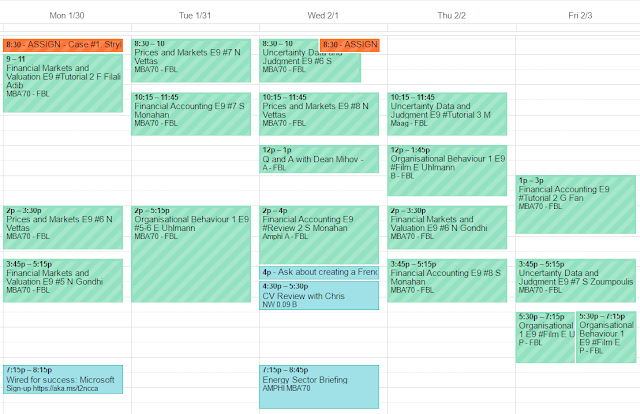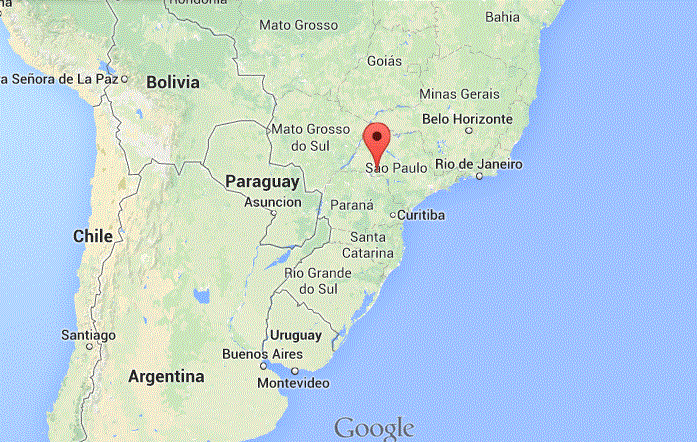Australia
I’m writing on the flight home from Australia after a
two-week whirl wind business trip that took me all across Australia.
This was by far my longest work trip and furthest distance
travelled on a work trip. Travelling for work has some marked differences
compared to travelling for pleasure. First, I was able to travel Premium
Economy (I was actually allowed to book business class but the prices seemed so
absurdly high that it felt unconscionable for my company to pay it). Premium
Economy was a nice upgrade from coach. Instead of 3 x 3 x 3 seats across the
cabin it was 2 x 3 x 2 and each seat was wider and longer. I could fully extend
my legs straight and recline more than a normal seat. As I was settling into my
seat and happy how much bigger it was, the person next to me remarked how we
couldn’t go fully flat like in business class. “Can you let me enjoy this for a
second?” I’ve never flown anything but Economy.
It’s so easy to adjust to your new reality and always want
more. Everyone in Economy wants to be in Premium Economy, everyone in Premium
Economy wants to be in Business, and everyone in Business wants to be on a
private jet. We should just be happy that we can travel from Washington DC to
Australia in about 30 hours. 100 years ago the journey would have taken 30
days!
When I arrived to the first city of Adelaide after layovers
in LAX and SYD, I was determined to beat my jet lag. I had 3 coffees and a red
bull and was wandering around the city like a zombie to get fresh air because I
knew if I stayed in the hotel I would fall asleep. Miraculously I made it to 9
pm and woke up at 8 am the next day with no issues. The technique worked and I
didn’t feel any jetlag during my trip other than self-imposed sleep deprivation
from watching late World Cup games that started at midnight. I think I will use
this method for all future travel. Your body is so confused from the travel
process that it is looking for any clue of what time to latch onto. The first
time you go to sleep, your body sets that time as the new normal. So if you
make the fatal mistake of a mistimed nap upon arrival, it is very difficult to
break the cycle.
I was a bit nervous for the first customer meeting as it was
a 3-hour workshop that I was supposed to lead with 5 people from the customer,
and 2 people from our partner company in Australia. The whole trip I felt a bit
of this imposter syndrome because I was consistently much younger than the
people I was speaking with, I was from a foreign country, and I am not an
electrical engineer.
Luckily, it didn’t end up being a problem as I was often
in the company of electrical engineers who could handle difficult technical
questions about the phase angle and short-circuit requirement and other things
I had no idea.
As background on Australia, renewable energy and energy
storage is a very important topic for a few reasons:
- Australia has expensive electricity and lots of sun, which are the perfect conditions for people to install rooftop solar on their homes to reduce their electricity bill. As the electricity utility company loses electricity sales to customers, they must increase the price on the remaining customers in order to pay for all the investment required to keep the grid running. As a result of increasing prices, more customers choose to install rooftop solar in a self-reinforcing positive feedback loop.
- · Australia has lots of sun and wind, so in addition to rooftop solar, many large-scale solar and wind farms are also being installed. Many coal plants are losing electricity sales to these renewable resources and as a result are beginning to shut down. This is great news, but it requires that energy storage be built to help manage the intermittency of renewable energy to cover the evening peak demand when electricity usage spikes as everyone comes home from work.
At the Sydney conference, I tried to explain some of these
issues and how energy storage helps and I proposed that we call it the Kangaroo
Curve, since the shape of the Australian net electricity load curve looks like
a Kangaroo. We’ll see if it sticks but I got a few laughs from an otherwise
fairly serious conference crowd.
After speaking in Sydney, I went straight to the airport to
catch a flight to Perth to speak on a panel about how energy storage can help
mining companies reduce their fuel cost. Perth is on the west coast of
Australia, about a 4.5 hour flight from Sydney, and the entire economy of the
city is driven by oil & gas and mining. The scale of the operations in the
Pilbra and other regions is truly astounding. These companies are HUGE. The
mining sector is very energy intensive so any steps towards using renewable
energy and energy storage to reduce emissions could have a massive impact on
reducing carbon emissions.
By Friday in Perth I was feeling a little lonely. I had left
Washington DC a week before and the entire time I had been bouncing between
meetings, flights, and hotels. Plus, I was in Perth, the most isolated city in
the world as measured by distance from another city with at least 1 million
people. To cheer myself up, I went to the Perth zoo to see kangaroos and
koalas, and I tried my best not to creep out the moms and dads as I was the
only unaccompanied zoo visitor. Turns out koalas are little junkies that sleep
22 hours a day and when they are awake eating Eucalyptus leaves for 2 hours a
day, it makes them high. The Kangaroos were cool though. The only thing
separating the kangaroos from the zoo visitors was a single rope that could
have been easily stepped, or hopped, over.
Culturally Australia felt very familiar. I felt zero
difficulty adapting culturally during the customer meetings despite being on
the other side of the world. If I had been in Thailand or Japan, for example,
this would not have been the case. Perhaps having grown up with an English
sense of humor in our family and visiting London and Toronto helped. Melbourne
felt similar to London in many ways. The city’s infrastructure, the shops, the
people all felt English. They even had Australian rhyming slang similar to
Cockney rhyming slang: “Steak and kidney” means Sydney apparently. I also heard
the phrase “Horses for courses” at least 5 times a day. I guess it means that
different problems require different solutions.
It was also great to catch up with my INSEAD study group
members Peter and Sajeed who live in Sydney and Melbourne, respectively. Both
took me to local restaurants including a casino with 1,000+ people to watch the
Peru vs. Australia World Cup game and a speakeasy down a dingy alley that felt
like it was out of the roaring 20’s.
The flight home was easy although when I returned home I had
to move all of my life’s possessions 3 floors down within the same apartment
building, which is a little harder after a 20 hour flight.
Adelaide, South Australia. Fairly small with a big university
The Sydney Harbor reminded me a San Francisco but it was much prettier.
Showing the Kangaroo Curve
Super-high koala
"Watcha gunna do bro?"
Kangaroos sunning themselves. They kept an eye on me, but were very used to having zoo visitors gawk at them
Winter in Brisbane was 75 degrees, but they still had a ice skating rink in the city center. The ice was completely melting so they were basically skating around in water
Doesn't this look exactly like Burger King? Not sure if the story is true, but legend has it that the franchise owner for Burger King got tired of paying royalties so just switched the name to Hungry Jacks and kept everything else the same
Koalie selfie... except koala is stuffed
View from my hotel room in Melbourne. Melbourne is a great city. Sydney is prettier but Melbourne has more going on
Sunset at train station on my way to airport
Downtown Melbourne. It's a hot city on a river, felt like a first-world version of Bangkok



















Comments